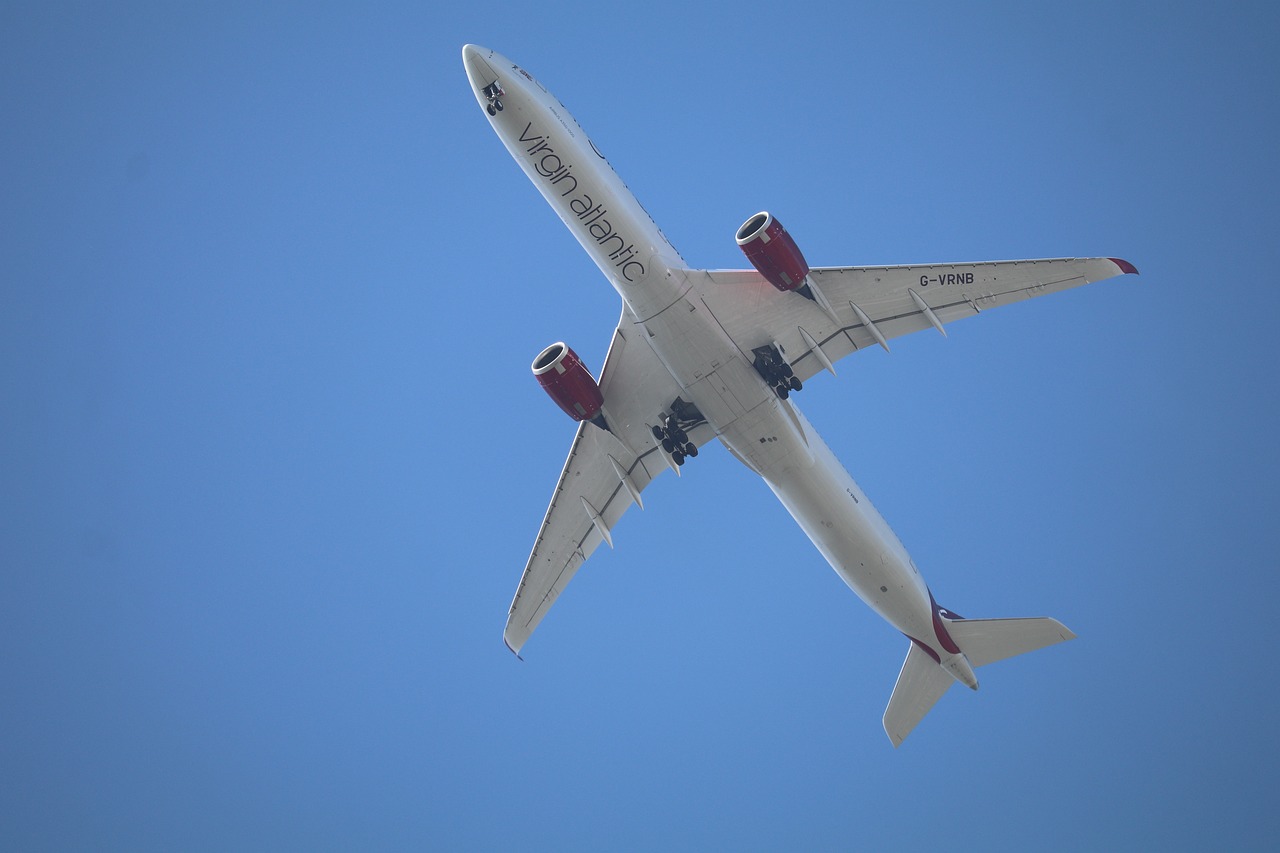This week on latest news is about SAF. Bio-based economy including biofuels and bioplastics was the major theme in my last post. This week on what’s new is an interesting application of biofuels in the aviation industry.
Let’s read about the incredible flight journey from Heathrow, London to John F Kennedy, New York City.
What’s special about this flight?
This Virgin Atlantic Boeing 787 flight is the first of its kind to cross the Atlantic and was powered entirely by Biofuel made of nearly 60 tons of fat waste and low carbon kerosine.
This was the first commercial aircraft to be fully powered by Sustainable Aviation Fuel (SAF). The Biden Administration billed this to reduce carbon emissions in the aviation industry.
Statistics from the Aviation industry
Before getting into the statistics of Carbon Emissions,
“Do you know how much it costs to fuel a plane?”
It costs approximately 1 Lakh to fuel a flight. India being a vast country runs at least 2200 flights every single day. And this is the cost per flight per day in one particular country.
What do we get at the end of it? Carbon emissions.
The Aviation sector accounts for over 2 % of global emissions, according to the International Energy Agency.
Aviation Fuels
It falls under four categories:
- Jet fuel (JET A1) similar to diesel
- AVGAS (Aviation gasoline) similar to car fuel
- Kerosine-gasoline mixture (Jet B)
- Biokerosine
Common ones include Jet fuel and AVGAS .
Sustainable Aviation Fuel (SAF) is an effective alternative to the four petroleum-based Aviation fuels.
Sustainable Aviation Fuels (SAF)
Technically, SAF has the same constituents (hydrocarbons) as fossil-based fuels. However, the hydrocarbons in this case come from a renewable source. This reduces the overall emissions compared to fossil-based jet fuels.
SAF is an excellent strategy for decarbonization (reduction of Carbon Dioxide emission) of the aviation industry, especially the long haul routes.
How is it Sustainable?
To use the term sustainability, they must meet certain criteria and they are: reduction in carbon emissions, limited requirement of freshwater, no necessity for completion with food production, and no deforestation.
SAF has two components that make it a sustainable source.
- Sustainability: can exhibit consistent reuse without depleting the natural resources.
- Greener feedstock: the feedstock is the raw material used to produce the fuel. Most feedstocks are petroleum-based. SAF uses waste material or crops as a feedstock.
How does SAF help reduce carbon emissions?
Technically, both SAF and fossil-based fuel release the same amount of CO2 upon combustion. However, no new CO2 is added into the atmosphere as SAF feedstocks utilize CO2 from the biosphere (renewable) rather than from the ground (non-renewable).
It not only helps reduce carbon emissions but also increases the economic value of waste thereby financially benefitting farmers.
The aircraft engines benefit from the usage of SAF. Since they have fewer aromatic components, they burn cleaner. The low emissions around the airport during take-off and landing is an added advantage of SAF.
Hence, overall SAF can positively impact climate change.
Sources of SAF Feedstocks
According to the 2016 billion-ton report by the US Department of Energy, 1 Billion dry tons of Biomass collected every year can help produce 50 to 60 billion gallons of biofuels. The waste biomass include corn, algae, residues from the forest, solid waste from the streams, greasy oils, algae, waste from certain industries like wood mill, wet wastes, and dedicated energy crops.
Bio-based ethanol as a SAF
The sole strategy for fuelling planes through biofuel is to convert corn to ethanol, which could be used as a biofuel. Ever since several companies have come up with initiatives relating to ethanol as a SAF.
In October 2022, Honeywell announced their innovative Ethanol-to-Jet (ETJ) technology which involves the bioconversion of corn- based or sugar-based ethanol to SAF.
The GREET (Greenhouse Gases, Regulated Emissions, and Energy Use in Transportation) model by USDA declares the eligibility of ethanol as a SAF feedstock.
Public reaction to SAF
Upon landing the flight in New York, a few passengers were asked about their experiences on the flight “The flight is as if you’re on any other flight, but your carbon impact is 70 percent reduced” says a passenger.
Funding the aviation project
This mission would not have been possible without funding from organizations like RMI, Boeing, and Rolls Royce. Rolls Royce provided the airline with the Trent 1000 engine and the United Kingdom’s Department for Transport funded the project.
Neste a Finland-based company, supplied Hydroprocessed Esters and Fatty Acids (HEFA), the waste needed for the preparation of SAF. HEFA along with some synthetic aromatic kerosene was used to fuel the plane. Air BP, a division of UK oil giant BP supplied HEFA for this flight, and kerosene was supplied by Marathon Petroleum.
SAF may be efficient, but it is not an easy road
Initially, it did not receive good traction mainly due to high costs and fewer supplies. Last year, the US produced 15.8 million gallons of biofuel. This shocking number is less than 0.1% of the total fuels required for consumption. The goal of the Federal Aviation Administration was to produce 1 billion gallons of biofuel by 2018. The Biden administration has now increased their goal to 3 billion gallons by 2030.
Inflation Reduction Act
According to the act, the producers of biofuel i.e. the farmers will get a tax credit of up to $1.75 for every gallon of sustainable fuel. It is calculated based on the amount of carbon reduction. This is a good incentive and could lead us to a bio-based economy. Imagining farmers growing crops to fuel planes is a beautiful sight in itself. But, what has equally worried farmers and environmentalists alike is the measurement of greenhouse gas emissions. How are they going to be measured? The other side of the coin is the debate on the possible use of fuels like hydrogen and natural gas which is often not considered ‘clean’ enough according to analysts.
Challenges specific to SAF in the aviation industry
Lack of supply of waste materials for SAF: for us to reach a high production, a significantly higher investment is required.
Decarbonization is especially difficult for the aviation industry: Batteries like Lithium Ion and others are not energy-dense and are too heavy to fuel a plane.
Light at the end of the tunnel
Despite the rocky road, companies like Neste ( a Finland-based company) are boasting 1 million tons of SAF per year and will be aiming for 500 million gallons by the beginning of 2024.
Future Goals
The International Civil Aviation Organisation aims to cut the carbon dioxide emissions from the aviation sector by 5% before 2030.
On the same note, the International Air Transport Association targets a Net Zero emission in the field of Aviation by 2050.
US companies involved in Biofuel Production like Gevo aim for a 1 Billion gallon of Biofuel per year by 2030.
This innovation marks a small stride toward a more eco-friendly revolution. Comment down below what you think.


Great! What other sustainable fuels are we going to see in the future?
Thanks for sharing!